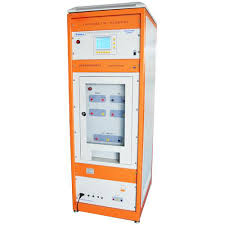A three-phase current synchronous generator intended for short-duration functioning under short-circuit situations. A surge generators is typically a two-pole, air-cooled turbine generator. These generators evaluate the switching capabilities, temperature, and electrodynamic stability of high-voltage apparatus.
The device test is either directly or indirectly linked to the surge generator. The surge generator gets chilled for many minutes after the short circuit lasts 0.06-0.15 seconds. The voltage generated is typically in the 6 to the 20-kilovolt range, with power ratings ranging from 3 to 7.5 gigavolt-amperes for the most significant surge generators.
Asynchronously electric engines power surge generators with phase-wound rotors that may reach power ratings of up to 6 gigatonnes and get stimulated by a different source. The surge generator distributor like the surge generator distributor in Delhi is to provide better quality generators.
What is a surge generator?
Surge occurrences are electrical impulses that get created by an outside source. Generators get used to imitate surge signals. The standards describe surge signals, and standard compliance surge generators meet this criterion. Fully compliant surge testing get performed when a surge signal gets applied with a fully compliant surge generator.
sometimes Surge generators are referred to as transient generators and voltage spike generators. Surge tests get carried out not only following IEC 61000-4-5 but also per automotive and defense EMC regulations.
Surge Generator SG 61000-5 Working Principle:
The immunity requirements are the foundation of the SG 61000-5 standard. It specifies the test methods and levels of testing for equipment against unidirectional surges induced by switching and lightning transients.
Electronic and electrical equipment testing levels differ based on the location and installation conditions. The primary purpose of this standard is to establish a single reference for estimating the surge resistance of electrical and electronic equipment.
Surge Protection SG 61000-5 immunity stress get defined as being symptomatic of voltage and current spikes. These pulses get created on power networks and cause events to occur outside of the equipment under test.
Surges are often induced by switching transients in the power system, such as capacitor bank shifting or load changes. Surges on electrical lines get caused by lightning, either immediately on the transmission system or as a result of a close lightning strike.
Method to measure surge voltage:
While surge voltage measurement, also abbreviated as a surge test, a charged capacitor is quickly switched in parallel to induce a surge pulse in the coils that must get studied. After connecting, the stored energy in the capacitor gets released into the inductivity, then back to the capacitor, and so on.
Utilization of Surge Generator:
The capacitor discharge technique gets carried out using a surge generator. This device serves the purpose of converting high voltage, uni – directional impulses from power lines. The pulses are then passed through the faulty power connection. The voltage generated by the power source is proportional to the charge of the capacitor.
The capacitor releases a high-voltage surge into the wire under test when we close the switch. Finally, we review the results. When a gap flashes over, the curve displays how time impacts voltage. Administering increasing voltages to the distance and monitoring the time lag until the sparkles stop produces the curve.
Lightning surge generators get used for lightning simulation testing. Many test standards require indirect lightning testing on components used in commercial avionics, automobiles, and military applications. These tests need to get conducted on components, goods, equipment, and vehicles to meet immunity test criteria.


